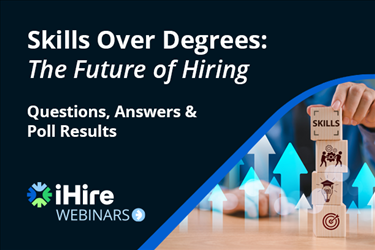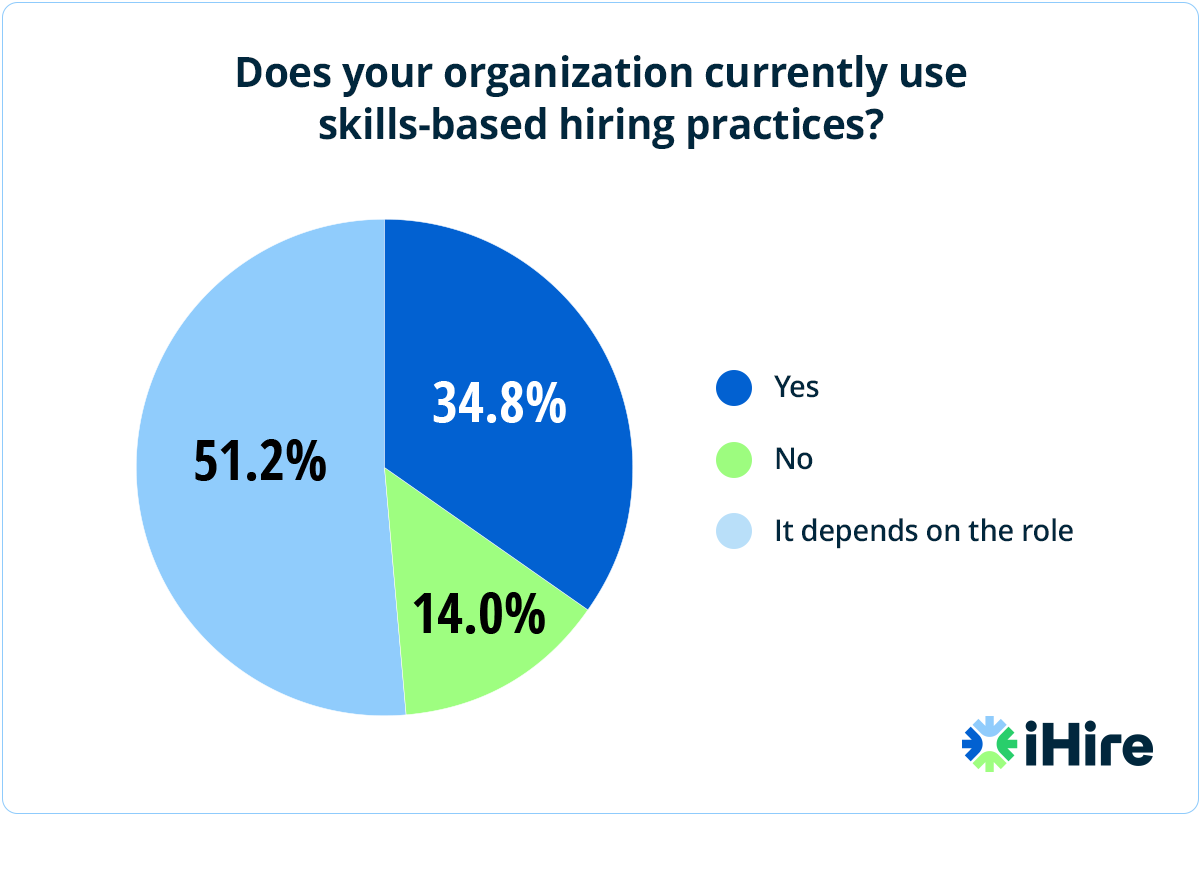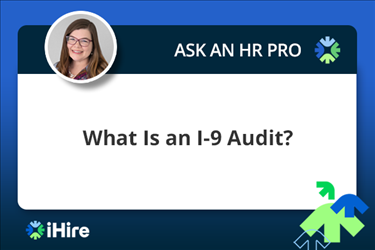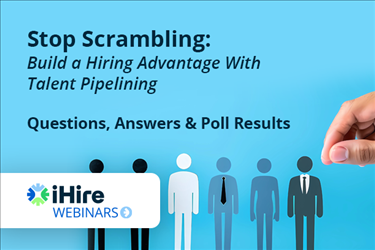- Employer Resources
- |
- Last Updated: August 27, 2025

Skills Over Degrees: The Future of Hiring [Questions, Answers & Poll Results]
1. How can we reduce unconscious bias when screening resumes?
Answer: One of the most effective ways to reduce bias is by anonymizing resumes – removing names, addresses, graduation years, and other identifiers that may trigger unconscious associations. This allows hiring teams to focus solely on relevant experience, skills, and achievements, creating a more equitable hiring process.
- Use a blind resume review tool or manually redact names, schools, and personal identifiers.
- Train hiring teams on bias awareness and how to focus evaluations on objective criteria.
- Standardize evaluation rubrics to compare candidates fairly based on defined skills.
Recommended Reading:
Blind Hiring 101: Addressing Bias in Your Recruiting Process
2. Is there such a thing as too many candidate assessments?
Answer: Too many assessments can overwhelm candidates and harm your employer brand. Be strategic – limit assessments to those that add real predictive value.
- Map each assessment to a clear hiring decision point and remove any redundant steps.
- Combine assessments (e.g., one timed test measuring both soft skills and critical thinking).
- Communicate why each step exists and provide quick, actionable feedback to maintain engagement.
Recommended Reading:
7 Candidate Experience Mistakes You Don’t Realize You’re Making
3. How should we weigh skills-based hiring against personality traits?
Answer: Both skills and cultural fit/add (which can include personality traits like resilience and empathy) matter, especially in industries like healthcare. Prioritize critical skills while evaluating soft/essential attributes that contribute to long-term success.
- Define both desired technical skills and personal attributes.
- Use structured behavioral questions or situational tasks to assess soft skills like resilience, communication, and teamwork.
- Pair practical tests with observational evaluations (e.g., role plays, simulations).
Recommended Reading:
Top 5 Soft Skills to Look For When Hiring

4. What should we look for in candidates who don’t have formal education but show potential to be trained?
Answer: When traditional credentials are missing, focus on traits that indicate adaptability, motivation, and learning ability. These candidates often thrive when given the right environment and support. Look for past examples where they’ve taken initiative, learned new tasks quickly, or overcome challenges through persistence and curiosity.
- Ask behavioral interview questions like, “Tell me about a time you learned something new without formal training.”
- Include a hands-on task or simulation during the hiring process to observe how they solve problems and take feedback.
- Consider creating a structured training path that supports learning while measuring progress and retention.
Recommended Reading:
How to Conduct a Behavioral Interview
5. By allowing skills-based hiring, do degree-holders have fewer opportunities? How can we ensure balanced inclusion?
Answer: Skills-based hiring complements – not fully replaces – degree considerations. Value proven competencies while keeping an open door for trained professionals.
- Recognize that degrees are still valuable; define equivalencies, e.g., a degree or a few years of relevant experience.
- Offer structured apprenticeships or entry-level programs that allow people without degrees to prove themselves.
- Monitor and track hiring mix and progression pathways to ensure fair access and promotion for all.
6. What’s iHire’s perspective on engaging high school students through tech or vocational classes for internships?
Answer: Early engagement is a strategic advantage. Focused outreach to high schools can build robust pipelines and strengthen your brand within the community.
- Partner with local schools offering career or technical tracks; provide shadowing, tours, or internship opportunities.
- Host workshops or career panels to spark interest in your industry.
- Create and highlight clear growth paths.
Recommended Reading:
10 Best Practices for Recruiting and Retaining Interns
7. How can we apply skills-based hiring in fields requiring licensure and degrees, like healthcare?
Answer: Beyond the non-negotiable qualifications, using skills-based frameworks to select for professional attitudes, soft skills, and learning agility can enhance hiring decisions.
- Split the process: verify legal credentials first, then evaluate skills/traits like empathy or adaptability.
- Create development tracks, including mentorships and learning modules.
- Structure onboarding to include skill refinement and ongoing support, ensuring both compliance and cultural fit/add.
Recommended Reading:
Streamlining Healthcare Hiring: 6 Ways to Recruit Top Talent Faster
8. How do we write job descriptions focused on skills while avoiding EEOC-related liabilities?
Answer: EEOC compliance requires that selection criteria be job-related and non-discriminatory. Frame skills-based requirements with neutrality and validation.
- Use objective, demonstrable skills and behaviors (“able to perform X task”) instead of subjective traits (“young,” “fresh”).
- Ensure all requirements are essential and validated – cross-check with job performance and business necessity.
- Have HR or legal professionals regularly review your job descriptions and job ads.
Recommended Reading:
How to Avoid Discriminatory Language in Your Job Postings
Reach Top Talent for Your Team
Create Your Account Today

We Value Your Privacy
9. How many screening questions should you use to get the insight you need but not overwhelm the candidate?
Answer: Too many screening questions can deter candidates – especially when the focus should be on key predictors of success. Aim for three to five high-value questions.
- Start with questions targeting essential skills, willingness to learn, and cultural fit/add.
- Use a mix of yes/no and short open-ended questions (limit to ~50 words).
- Monitor drop-off rates; if many abandon mid-application, simplify and focus further.
Recommended Reading:
43 Applicant Prescreening Question Ideas You Can Use Today
Check out the full webinar, “Skills Over Degrees: The Future of Hiring,” to learn more.
RELATED RESOURCES
Hiring? You're in the Right Place.
- Reach unique talent: 51% of our candidates aren't using other job boards
- Connect your ATS and get 6x more applications with iHire's apply process
- Get matching candidate resumes sent straight to your inbox
We Value Your Privacy


![Skills Over Degrees: The Future of Hiring [Video Webinar]](https://p-gpb8fhd4b9fbh6fy.z01.azurefd.net/cms/2f6c3996-55d2-41a7-92cd-801a93177d31/4adbd698-ab4c-4e81-9823-8c8cfade1f76-md.png)

